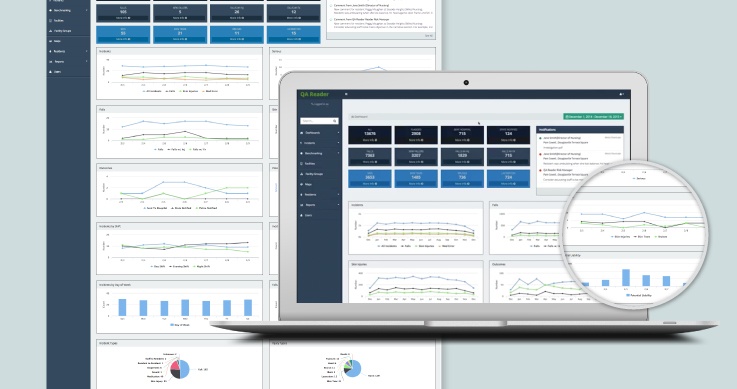Peter Feeney
Recent Posts
Two Must-Do Milestones to Becoming a 5-Star Facility
If your community is a three- or four-star facility, you may well have it in your DNA to make the leap to five-star status. And if you're a one or two star, maybe it was just bad luck that got you demoted—just a bad survey or an unfortunate resident fall. Hope is a great attribute, but it's not a strategy. As Thomas Jefferson said, “I’m a great believer in luck, and I find the harder I work the more I have of it.”
So if you want to achieve a five-star rating, you do have an opportunity to do that! Everyone wants to be a five-star, and it should be a real goal. But how can you get there? The truth is that you and your team have to do a thousand things a day (seriously) really well. But the two most critical areas where you can drive results are staffing adequately for acuity and professionally managing adverse events.
Topics: Quality Assurance, Administration
How to Talk to Your CFO About Cost-Effective Adverse Event Management
CFOs and caregivers can be an interesting mix—sort of like oil and water or Mars and Venus. When one talks, the other might just be hearing “Waa wa wa…” So a big ingredient of a successful team is for members with different styles to learn how to communicate effectively. Communicating effectively often means learning how to listen and translate the other party’s language. Another key ingredient to successful communication is to avoid being triggered by key words or phrases and to avoid triggering your teammates.
How do you, the Administrator or Director of Nursing, get in the CFO’s wheelhouse? First, you have to remember that there is no one “type” of CFO. However, for the sake of simplicity, we're going to state that the CFO will be more concerned about money than anyone else in the organization, with the possible exception of the owners.
Topics: Administration
Your Adverse Events Are a Gold Mine of Opportunity
You're required to keep track of adverse events in your communities, but keeping track means different things to different people. Some folks only do what they have to do to meet the minimum standard. Their teams fill out paper incident forms and place them in a file. They might even put the data into their EHR. Usually, teams compile the information periodically—most likely in an Excel spreadsheet—and share it at a quality meeting hopefully on a quarterly basis.
Most communities hate even thinking about adverse events, but the best teams realize incident reports contain a gold mine of valuable data. QA Reader is an adverse event tracking software that turns your incident reports into an insight generator to improve QA and even help prevent incidents before they occur.
Topics: Incident Reporting
The title of this article is more than a little audacious and presumptuous, so let me simplify. The following is what I have learned from the best providers in the industry. You know who they are. You know the teams that run them. You know their leaders.
Topics: Administration, Patient Care
QA Reader is revolutionizing quality assessment in senior living facilities. When our customers hear about its ability to prevent adverse events and reduce nurses' administrative hours by as much as 500 hours, they naturally have a lot of questions. Here are the 10 most common questions we get.
Topics: FAQs
Be Ready for Surveyors Before They Arrive at Your Door
By the time they arrive at your community, the survey team has already chosen the first phase resident sample. It isn’t magic—they have the same tools our communities have: a current CASPER report and the two federal forms: the 672 and the 802.
So why don’t we use them ourselves? Wouldn’t it be great to have your own “resident sample” that mirrors the surveyors'? You should also be using these tools as part of your QAPI and PIP process to improve QMs and health inspection reports!
Topics: Regulatory Compliance
Hidden Risks Your QAPI Committee Doesn't Know About
As we travel around the country visiting communities and partnering with them for improved outcomes, we often identify areas of risk associated with incident trends and tracking. In a perfect world there would be no falls, elopements, burns, or lacerations—but the world we live in isn't perfect! Unfortunately, neither are many of the systems your QAPI committee depends on to keep on track and reduce incidents with injuries.
Topics: Risk Management
The best claim is the claim you never have to file—so reducing risk is a big deal for us. Our parent company, HealthCap, visits nearly every member on their premises every year to help them deliver better quality to their residents, families, and employees. The visits involve a mix of consultation, data gathering, and analytics. As a by-product, we help reduce claims.
After 15 years of working with member communities, we've consistently seen four top ways to reduce risk across communities.
Topics: Risk Management, Administration
You Could Manage Risk Better By Staffing Smarter
When we talk about risk management, we often overlook one important aspect of how we provide care to our residents: staffing. So, let’s talk about staffing. How do you staff your community: are you staffing by acuity, census, or “clinical acuity”?
Topics: Risk Management










